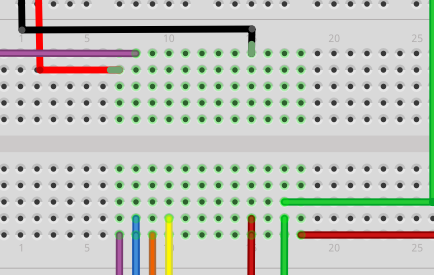I'm running 0.9.3b on Ubuntu. When I place a Arduino Pro Mini on the breadboard it shows up, but after I close and reopen the file the Pro Mini is gone from the breadboard view, but is still in the PCB and Schematic views. If I place another Pro Mini on the breadboard, the part is duplicated in both the PCB and schematic views. Many of the holes stay green on the solderless breadboard in the Breadboard view though, like the Mini is still there but not being drawn.

I'm using the Pro Mini from the Arduino section.


 ). As a side issue, I think your connections to the battery charger are incorrect (I'm not sure mine are any better though, you need to look over the documentation for it
). As a side issue, I think your connections to the battery charger are incorrect (I'm not sure mine are any better though, you need to look over the documentation for it